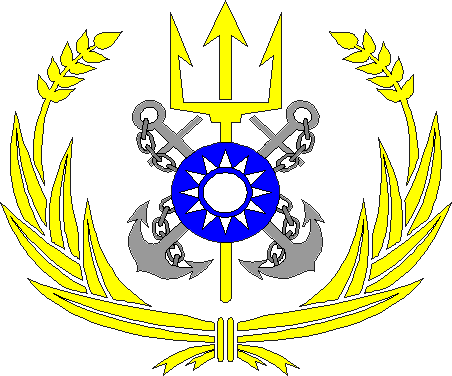Ranks of the Imperial Chinese Navy:
- Admiral of the Fleet
- Fleetadmiral
- Admiral
- Vice Admiral
- Rear Admiral
- Commodore
- Captain
- Commander
- Lieutenant Commander
- Lieutenant
- Lieutenant Junior Grade
- Ensign
Admiral of the Fleet:
The "Admiral of the Fleet" is the highest rank of an active post. It is a special (prominent) rank or a service position,
which is staffed by an experienced admiral, who has the command over large groups of ships or fleets, or sometimes
leads about groups of whole fleets.
The rank of "Admiral of the Fleet" must not be confused with the rank of the lower standing "Fleet Admiral".
The Commander in Chief of the South Fleet is an Admiral of the Fleet.
Fleetadmiral:
The Fleet Admiral is the second highest rank. Also this place or this service position is filled by an experienced admiral,
who has the command over large groups of ships. However, the "Fleet Admira"l as opposed to the "Admiral of the Fleet"
must not lead not groups of entire fleets.
The Commander in Chief of the North Fleet or the Commander in Chief of the East Fleet is a Fleetadmiral.
Admiral:
Admirals are also known as flag officers, because they may carry as a sign of their rank their own admiral's flag. In the
ranking all other ranks subordinate to them. The promotion to admiral is a function of seniority as a captain and is for life.
The Commander in Chief of a Fleet Division is an Admiral.
Viceadmiral:
The Vice Admiral is the assistant of the commanding admiral and is not at the same flagship of the division, to prevent
a simultaneous failure of the two commanders.
The Vice Commander in Chief of a Fleet Division is a Viceadmiral.
Rear Admiral:
The Rear Admiral Admiral called the lowest rank of the admirals. It is used mostly as a squadron commander or head
of department, but also in many other uses in all basic management areas at all levels of management. Furthermore,
the Rear Admiral is the commanding admiral of an independent squadron or an independent association, which is not
linked with to a fleet division. Independent squadrons are combat squadrons of the Chinese navy, for the enforcement
and national security interests worldwide.
The Commander in Chief of a Squadron is a Rear Admiral.
Commodore:
The Commodore is the commanding officer of the Chinese Auxiliary Fleet. The task of the auxiliary fleet is to secure the
supply of the Chinese navy with fuel, ammunition, water and food.
Captain:
The Captain is the senior staff officer rank. Captains are used as commanders of battleships or schools, and in many staff
officer uses in all areas of basic leadership. Even the Commander in Chief of the sail training vessel Fu Chi is a Captain.
Commander:
The Commander is a staff officer rank. The Commander in Chief of a cruiser is a commander.
Lieutenant Commander:
The Lieutenant Commander is the lowest-ranking staff officer rank. The appointment to Lieutenant Commander is usually
preceded by a study at a Naval Acedemy. The Commander in Chief of U-boat is a Lieutenant Commander.
Lieutenant:
The Lieutenant is a soldier in the third lowest officer rank in the chinese navy. The captains of the ships of the CMSG are
usually Lieutenants.
Lieutenant Junior Grade:
The Lieutenant Junior Grade is a soldier in the scond lowest officer rank in the Chinese Marine a soldier in the second
lowest officer rank.
Ensign:
The Ensign is a soldier in the first and thus lowest officer rank in the chinese navy.

